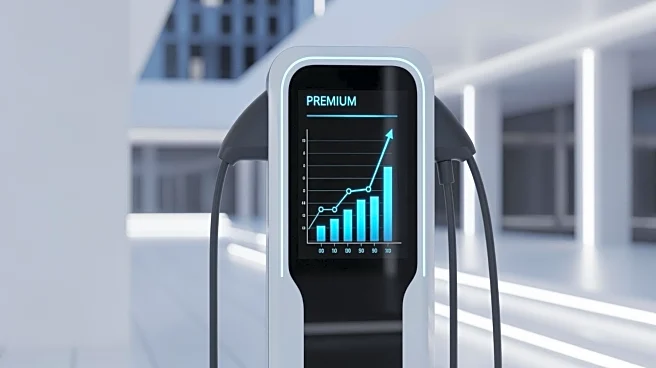What's Happening?
A2MAC1 and ZeBeyond have announced a collaboration to introduce a simulation-first benchmarking platform for electric powertrains. This partnership merges A2MAC1's extensive electric vehicle powertrain database
with ZeBeyond's virtual validation tools, creating a comprehensive digital library of powertrain efficiency and performance assets. The platform is designed to enable original equipment manufacturers (OEMs) and tier one suppliers to validate vehicle efficiency and performance within days, as opposed to the traditional methods that can take over a year. The collaboration aims to address bottlenecks in physical testing methods, providing engineering teams with rapid access to powertrain insights through digital validation.
Why It's Important?
The introduction of this simulation-first platform is significant for the automotive industry, particularly as it transitions towards electric vehicles. By enabling faster validation of powertrain efficiency and performance, OEMs can accelerate the development of next-generation electric vehicles. This could lead to quicker innovation cycles and potentially lower costs associated with lengthy physical testing processes. The platform also sets a new industry benchmark for data-driven powertrain development, which could enhance competitiveness among automakers and suppliers in the rapidly evolving EV market.
What's Next?
The partnership between A2MAC1 and ZeBeyond is expected to influence how OEMs and suppliers approach electric vehicle development. As the platform gains traction, it may prompt other companies to adopt similar simulation-based validation methods, potentially reshaping industry standards. Stakeholders in the automotive sector may need to adapt to these new benchmarks, which could lead to increased investment in digital validation technologies and a shift in engineering practices.
Beyond the Headlines
The collaboration between A2MAC1 and ZeBeyond highlights the growing importance of digital tools in the automotive industry. As electric vehicles become more prevalent, the need for efficient and rapid validation processes becomes critical. This development may also have implications for workforce skills, as engineering teams may require training in simulation-based validation techniques. Additionally, the platform could contribute to sustainability efforts by reducing the need for extensive physical testing, thereby minimizing resource consumption.











